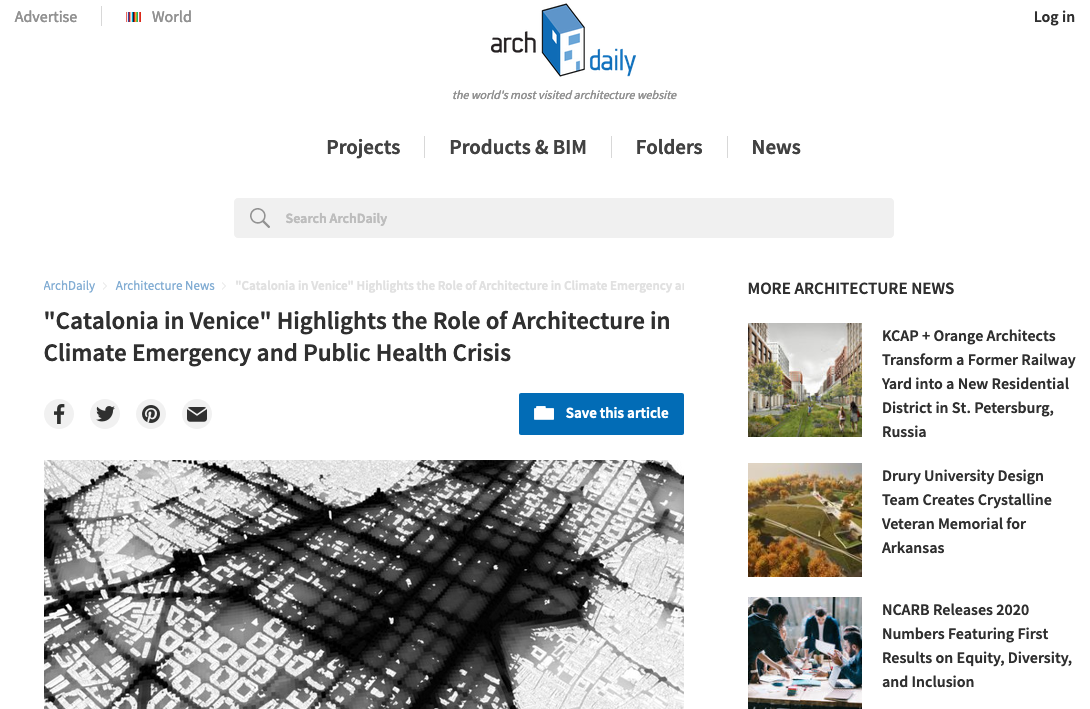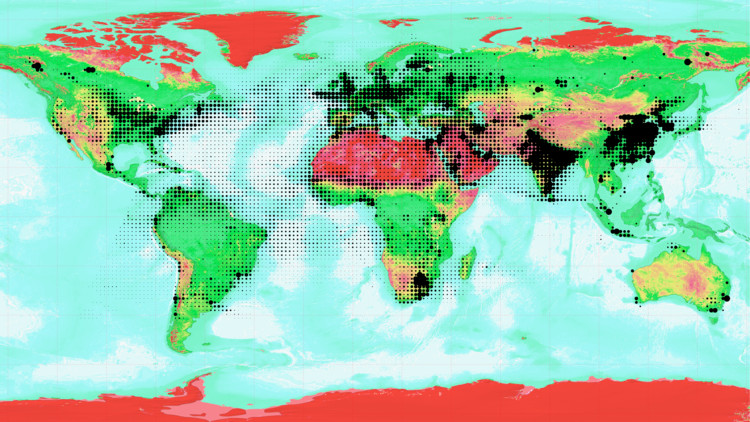Text Written by Christele Harrouk published at Arch Daily
Catalonia in Venice - air/aria/aire, part of the Collateral Event of the Biennale Architettura 2021, is an exhibition curated by architect Olga Subirós, commissioned by the Institut Ramon Llull, with the participation of 300.000 Km/s, an urbanism studio in macro data-based strategic planning. Reflecting on the central theme of the Biennale “How will we live together?” the project investigates the role of architecture and urbanism within the context of the climate emergency and the public health crisis.
Barcelona with pollution. Image Courtesy of Jon Tugores
Barcelona without pollution. Image Courtesy of Jon Tugores
Particularly relevant within the context of the COVID-19 health crisis, the exhibition Entitled Aire, seeks to find solutions to two interconnected global crises, “through an investigation into air pollution and how it directly affects people”. Running from May 22 till November 21, 2021, the intervention“offers an immersion into the radical experience of air contamination through a large, multisensory installation”. Knowing that epidemics have always been an opportunity to accelerate the introduction of urban planning measures aimed at improving health in cities, Catalonia in Venice - air/aria/aire is an investigation into new work methodologies, which allow for a radically different analysis of the cities, and a different visualization of future opportunities.
Maps of emissions- O3. Image Courtesy of 300.000 Km/s
Maps of emissions- NO2. Image Courtesy of 300.000 Km/s
Based on the study of the city through the application of digital technologies to analyze data, Catalonia in Venice - air/aria/aire rethinks urban design. Focusing on the importance of access to open data, “the project proposes a revision of the concept of smart cities in which the use of technology is not the solution, but rather a tool to constantly renovate the social pact”.
The architecture of the exhibition space designed by Olga Subirós “offers a large-format, immersive experience that brings visitors closer to three aspects of air pollution”. 300.000 km/s will present the results of a project to create new cartographies of the city of Barcelona and of Catalonia, based on an examination of architectural, urbanistic, atmospheric, and health data. The cartographies were created using a vast range of information, from the European Space Agency (ESA) data to numerical models established by various public and private research groups in Catalonia.
Maps of vulnerabilities (Barcelona)- Urban vulnerability (public space). Image Courtesy of 300.000 Km/s
Catalonia in Venice - air/aria/aire
May 22 — November 21, 2021
- Curator: Olga Subirós
- Participants: 300.000 Km/s
- Commissioner: Institut Ramon Llull
x01z20






.jpg?1595315304)




